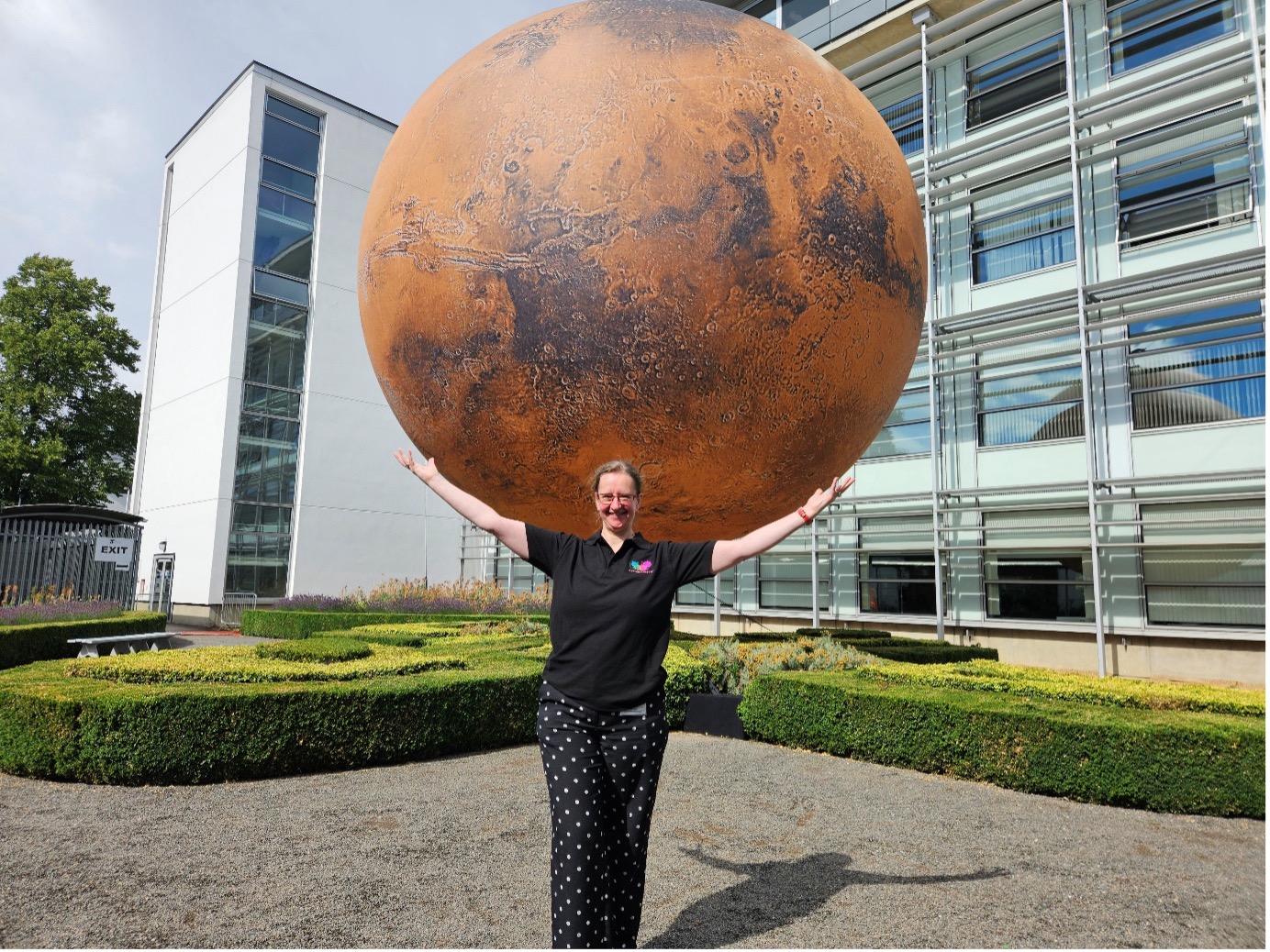When Mars landed at the OU – a very personal reflection
It seemed to be just a normal morning, when I pulled into the parking lot. The excitement around the artwork that we hosted on OU campus for the weekend hadn't yet started. But there was a fire truck, and I couldn’t make out which building had been evacuated, and what was blocked and what wasn’t. So, I decided to walk over to the Berrill building to see the Mars installation by Luke Jerram (About – Mars) for the first time. Barriers were still up from the night, but there it was, orange in the bright morning sunshine!
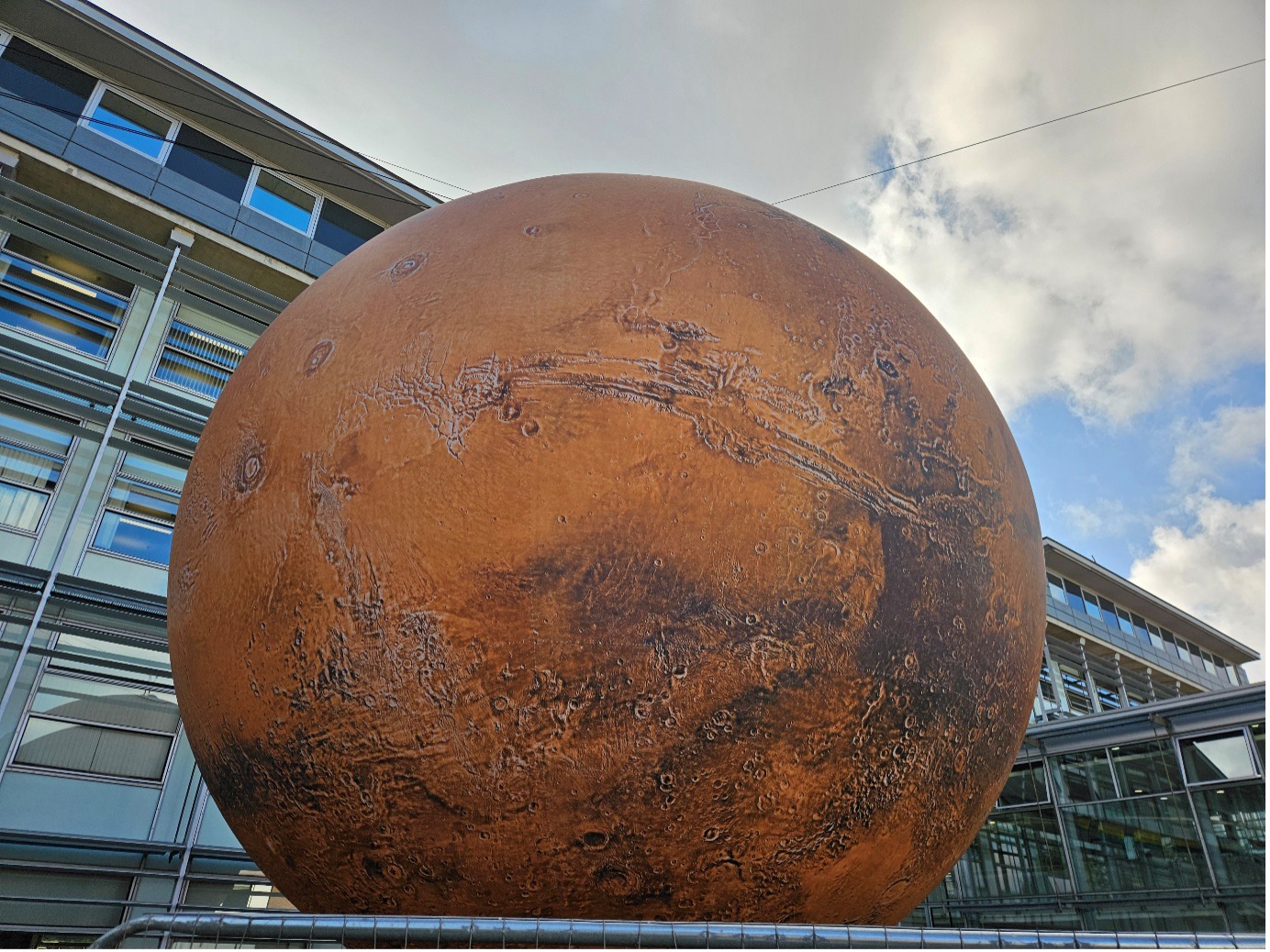 Garden path gravels crackled under my feet as I approached; I felt a wave of emotions. Awe, wonder, happiness, and all the numbers and hours of staring at my screen come to life in a dance of orange and black.
Garden path gravels crackled under my feet as I approached; I felt a wave of emotions. Awe, wonder, happiness, and all the numbers and hours of staring at my screen come to life in a dance of orange and black.
I was soon joined by a few more early-arriving colleagues. Guided by a colleague from estates, who also took in the morning sights, a few of us early birds made it to a higher floor of the building to peak out of the window. What a sight. Mars from above, especially beautiful was the view from a nearby stairwell window, looking down at the north pole of Mars, seeing the ice cap, letting my eyes wander down from there, identifying Ma’am Vallis and Gusev Crater, where the rover Spirit still sits silent to this day. It worked 2208 sols, over 14 Earth years to explore the plains and hills of the crater. I was a PhD student when that happened, in awe of my colleagues at Max Planck Institute for Chemistry in Mainz (Germany), who were on the mission teams of the NASA Mars Exploration rovers Spirit and Opportunity.
As the installation slowly turned in the wind, Gale crater came into view. It is here that the NASA Mars Science Laboratory Rover Curiosity currently operates, it worked sol 4605 while I spoke about it under the installation over the weekend. If you are curious about the mission: Mars Science Laboratory: Curiosity Rover - NASA Science, you can also find a blog there which tells the story of what the rover is up to on a daily basis. I have the privilege to be on the science team (and one of the blog writers!), to help with the day to day decision making of what to investigate – and of course to think about all the data the rover returns to Earth to piece them together to little by little learn more about planet Mars, about the early history of Mars and by extension our own Earth. This is what made the Mars installation so special for me.
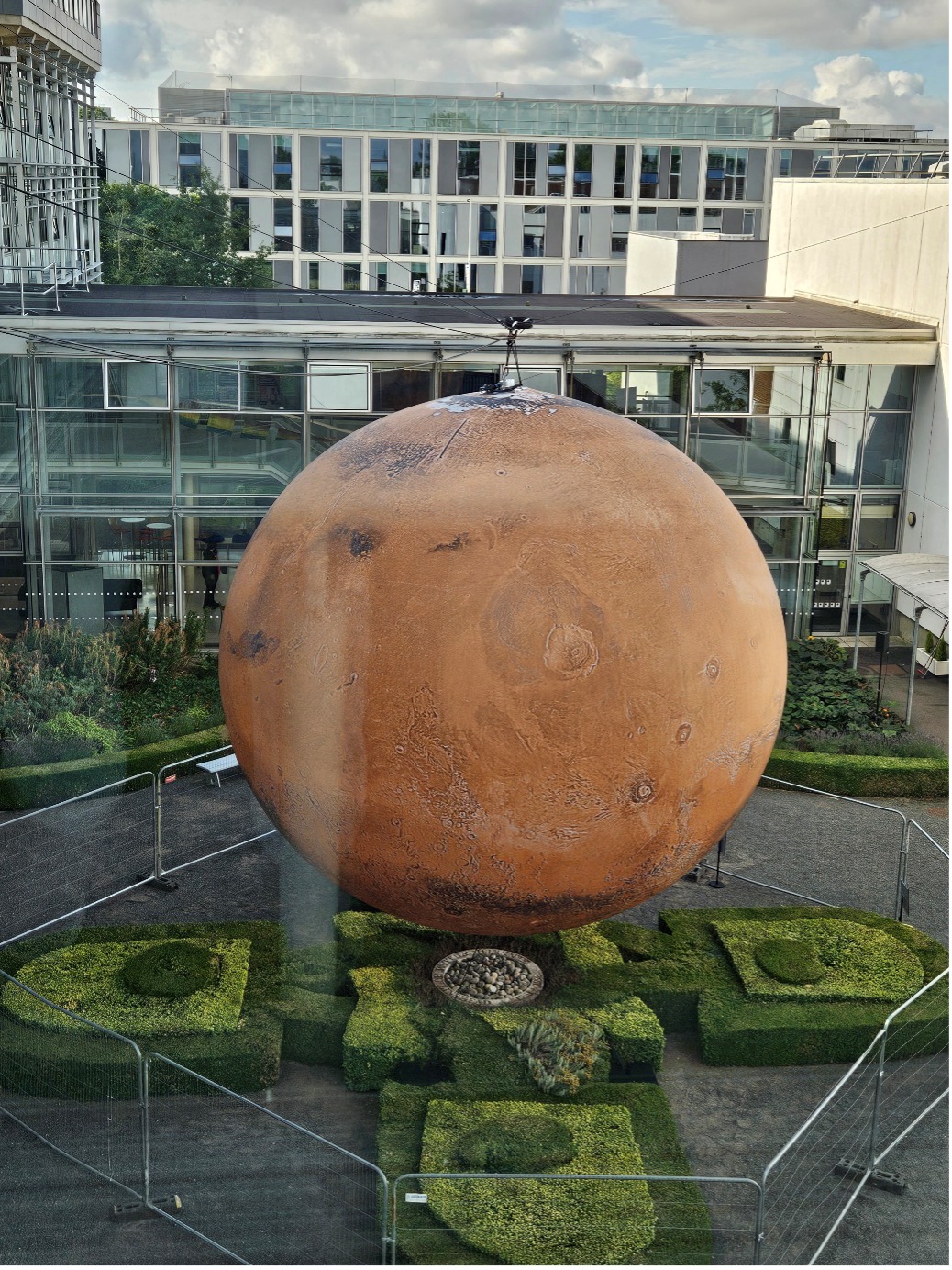
Just an hour later the event officially started, and there was a startling difference to the silence and serenity of the morning… there now was a soundtrack. Water, thunder, peaceful calm music, wind, storm, sharp whistling and cracking, voices of my NASA colleagues and the general public narrating parts of Mars’ current and future exploration. What stood out was the voice of Dr Ashwin Vasavada, the project scientist of Curiosity and an honorary graduate of the OU, speaking about the science rationale for the Curiosity mission: to find out if Mars was habitable – beyond what we already knew: yes, there was water. These sounds and voices, I read as telling the story of Mars geologic history, with a wet start and a dry current environment, and all the way to robots (and maybe one day humans) exploring it. But finding out more about it later, Luke Jerram’s interpretation is very different, as the piece is called ‘War and Peace’ – you can hear it here: MARS artwork soundtrack 2023 by Luke Jerram.
Soon, people started arriving, OU colleagues on their way to the office at first, and then more and more members of the public, some from Milton Keynes, and some from afar, visiting specifically for the IF Festival. Watching them arrive, everyone stopped in their tracks and took in the sight. The Mars installation looked magnificent, bright orange in the bright sunshine. Over the day about 500 people came to see it, and I had great fun talking to many of them. At this point, I want to thank all the staff and volunteers – colleagues from the OU as well as those working for the IF festival – to make this happen. I could see in the eyes of adults and children alike what the moments they had with Mars meant to them. Some silently contemplating, listening to the soundtrack, watching the installation slowly swaying in the wind. Others interested in locating landmarks. When I started pointing out some to them, crowds quickly assembled and wanted to know more. We talked about missions, about planetary protection of Mars and our own planet, about the biggest volcano in the Solar System, and it always surprised me how kids take an unusual sight like this in. We had some very inquisitive ones, who wanted to know everything about the planet – how big, how cold, how does the dust feel…. and others who played Mars moon running around in circles or making drawings of it. … each and every one, no matter their age, taking their own message home.
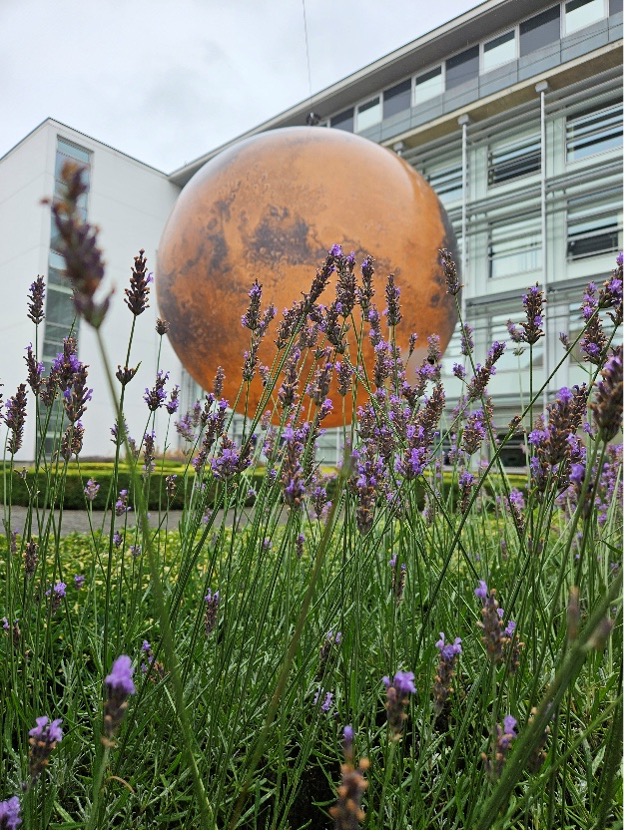
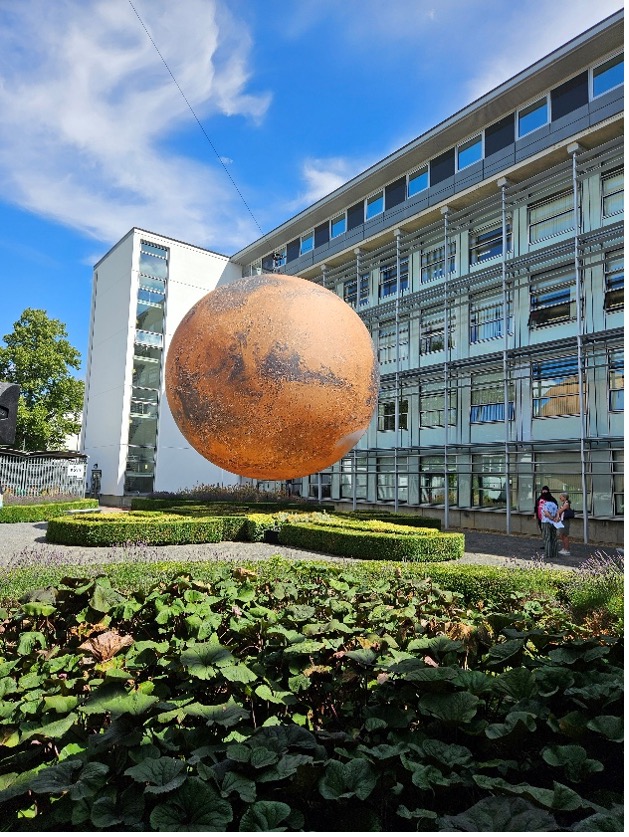
Saturday was the big day, and it started with pouring rain. We had set up a big table with activities from AstrobiologyOU, and colleagues from around the STEM faculty had brought their activities too, including a model of the TGO. We had about 1000 people visiting, despite the rain pouring down for the entire morning. No one was deterred by it, and to me the contrast of Earth and Mars could not have been stronger. “Water on Mars” – I joked with a colleague of mine, but that didn’t deter our visitors to ask many, many questions. The weather cleared up later in the day, just to return with even more rain for Sunday morning. But, who cares about a little rain on this planet, when Mars comes to visit! No one, it seems!
It was a great privilege to be around the Mars installation for the three days it visited the OU, it was an even bigger privilege to meet Luke Jerram himself, hear him speak about his other projects as well, the highlight for me – apart from the Mars installation, of course! – were the glass microbes. So many ideas, science and art coming together, making visible what is otherwise too small or too big to see, and allowing us to connect with it in many more ways than what numbers allow. But now… back to the numbers, as I haven’t lost my excitement for finding out how that next piece of the knowledge puzzle will fit into what we already know about Mars, and our own Earth too.
